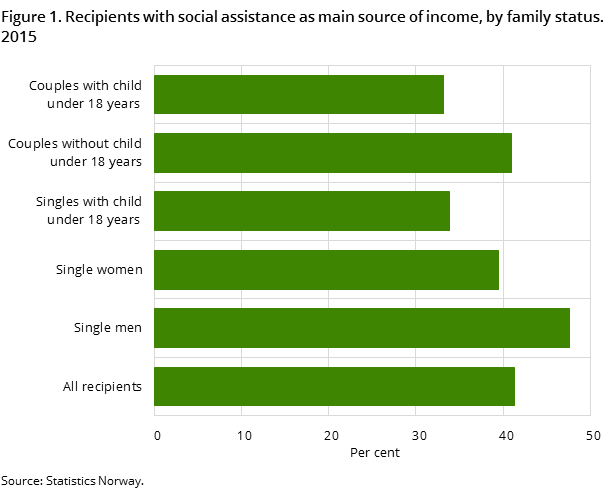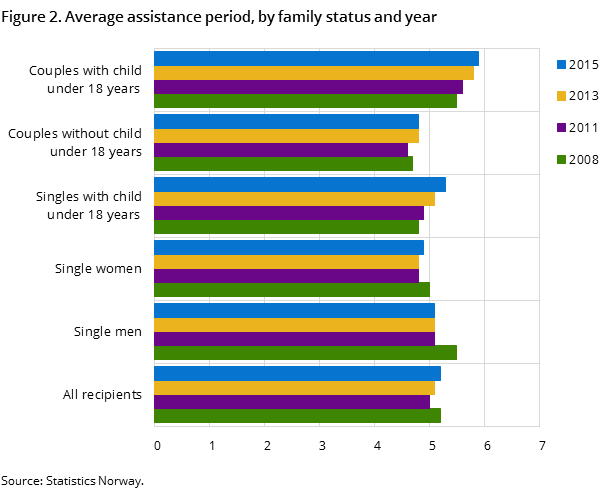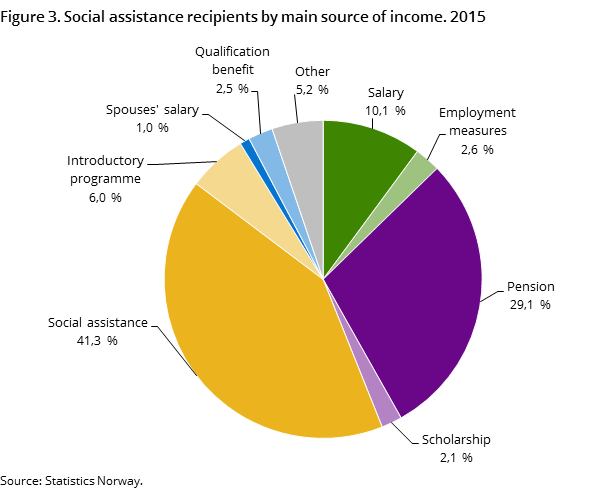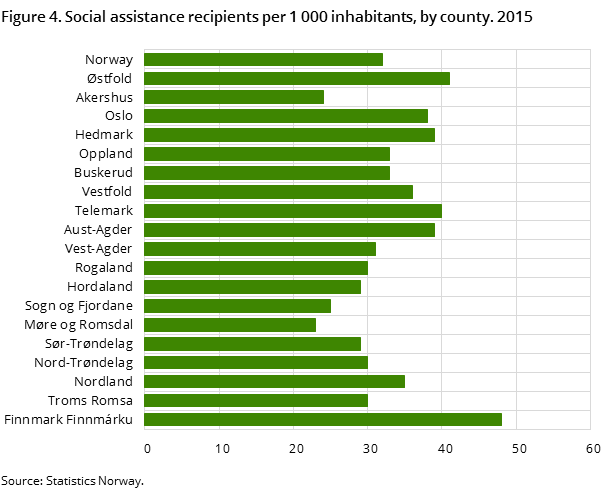Content
Published:
This is an archived release.
63 000 children provided for by social assistance recipients
Last year, payments of social assistance continued to grow more than the number of recipients. While recipients were up 1.5 per cent, the growth in expenditure was twice as high after adjustment for general inflation. Payments are now approaching NOK 6 billion.
| 2015 | |
|---|---|
| Recipients of social assistance | 127 372 |
| Single males total | 49 893 |
| Single females total | 28 746 |
| Social assistance as primary source of income | 52 655 |
| Expenditure on social assistance (1 000 NOK) | 5 889 412 |
| Average payment per month | 8 975 |




The growth in social assistance was somewhat lower in 2015 than the year before. The number of recipients reached 127 400, while expenditure amounted to NOK 5.9 billion. The increase in expenditure reflects the fact that 84 per cent of municipalities increased their basic payments somewhat.
Further slight increase in social assistance as main source of income
The proportion of recipients living on a salary is fairly stable over time at 10 per cent. However, there are more singles in this group than before, and relatively fewer recipients providing for children.
The proportion with social assistance as their main source of income fell during the years 2006-2011, but has been increasing ever since. In 2015, this proportion reached 41.3 per cent. Singles make up less of this group over time, while people providing for children and couples without children make up more.
Increased assistance dependency among providers for children
There were almost 32 000 recipients providing for children last year. These families comprised 62 700 children, i.e. 1.97 children on average. Of recipients with children, 3 200 had 4 children or more, making up a total of 15 000 children. Of the children provided for, almost half were in families receiving long-term assistance, i.e. 6 months or more during 2015, and more than one out of four were in families receiving assistance for 10 months or more.
Of the providers, 17 500 were single providers and 14 500 were couples. While the average number of months per recipient has been fairly stable since 2008 (5.2 months), the number of months is up among providers: from 4.8 to 5.3 months among single providers, and from 5.5 to 5.9 months for couples.
Many municipalities have almost no long-term recipients
There are large disparities among the 427 municipalities as to the extent of long-term dependency on social assistance. While the national average was 5.2 months, in 9 smaller municipalities the level was below 2 months. On the other hand, 8 larger municipalities were experiencing levels above 6 months.
In 45 smaller municipalities, not a single recipient received payments for 10 months or more. Six larger municipalities saw this proportion exceed 30 per cent of all recipients.
Contact
-
Unni Beate Grebstad
E-mail: unni.grebstad@ssb.no
tel.: (+47) 94 50 68 66
